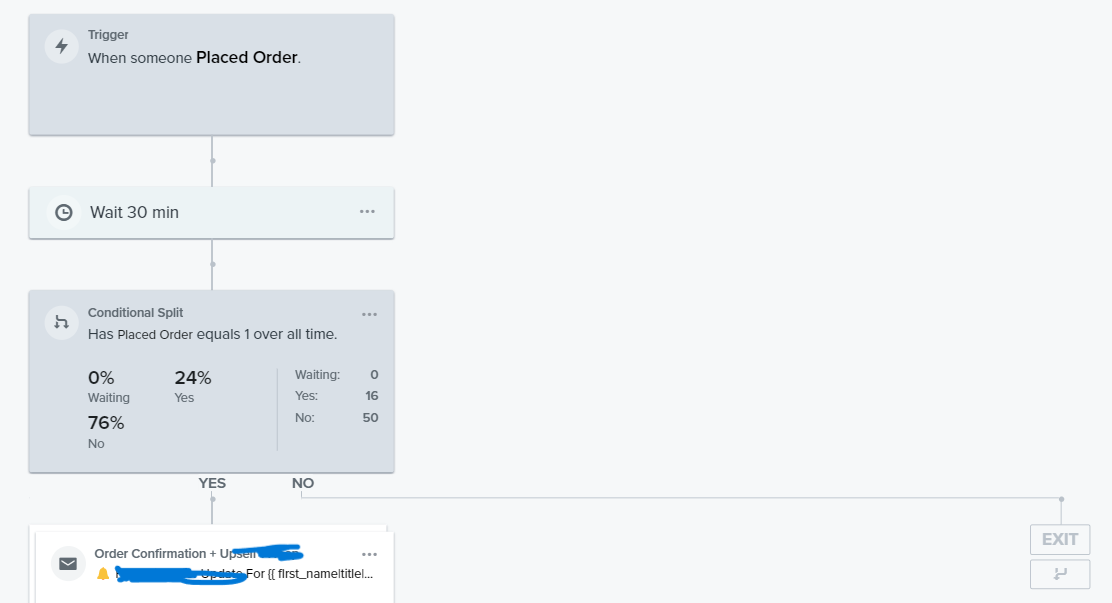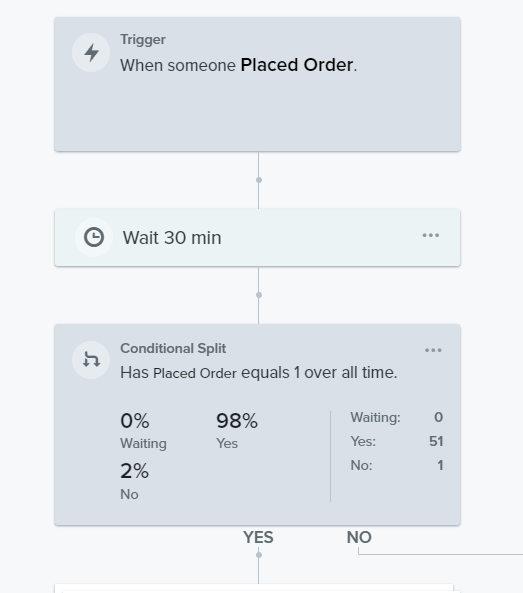Hello @gamegirl92,
Welcome to the Klaviyo Community!
In my experience this is pretty common if the flow was set live recently or if the conditional split rules has been changed or updated recently to what it presently reads.
If the flow was new, it could be that there isn’t enough data yet. Looking at your screenshots, it only appears to have 66 recipients navigating through the flow, which isn’t a very large sample. Similar to analyzing any data, you’ll typically want to have a large enough sample size to make any inferences.
Changes to a flow are not retroactive. This means that if your conditional split previously had a different set of definitions, updating them would not update the existing analytics for that split. Because there may be existing data recorded in that split, users get confused sometimes by seeing a different proportion of users going down each branch. This will typically take some time to settle out, but users going through the flow since the chance will be subjected to the new conditional split rules.
Additionally, although you reported you may only have a 5% retention rate, those customers can be extremely loyal which explain why more users are being navigated down the NO path rather than the YES path. The conditional split rule you have set up is simply to evaluate if a user has recorded exactly 1 placed order event or not. This means that those users who have placed several orders at differentiating times will all be brought down the NO path. For example, a customer that has placed four individual orders would be brought down the NO path four times; whereas users can only place an order exactly once once.
I hope this helps!
David




![[Academy] Deliverability Certificate Forum|alt.badge.img](https://uploads-us-west-2.insided.com/klaviyo-en/attachment/505f2253-cde5-4365-98fd-9d894328b3e0_thumb.png)

![[Academy] SMS Strategy Certificate Forum|alt.badge.img](https://uploads-us-west-2.insided.com/klaviyo-en/attachment/2f867798-26d9-45fd-ada7-3e4271dcb460_thumb.png)

